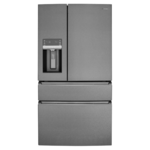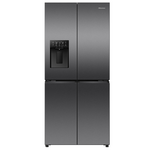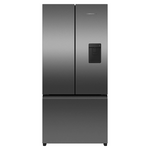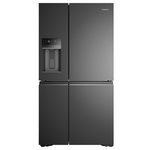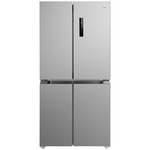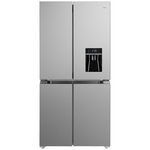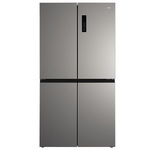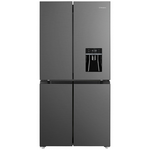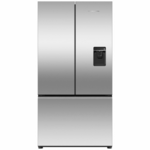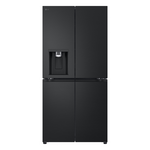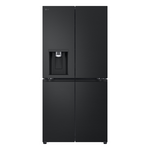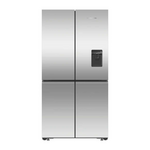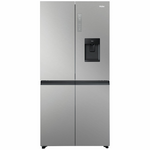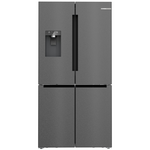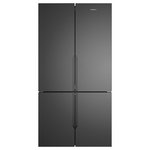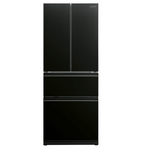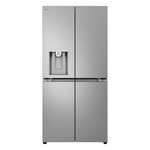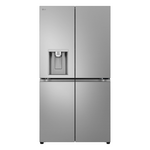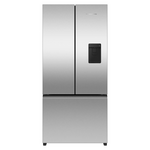
Kitchen
All things cooking, cleaning, chilling and more for the hard-working heart of your home.
KITCHEN | 4 APRIL, 2025
6 MIN READ
13 ways to keep food fresher for longer in the fridge
It’s about more than just temperature.
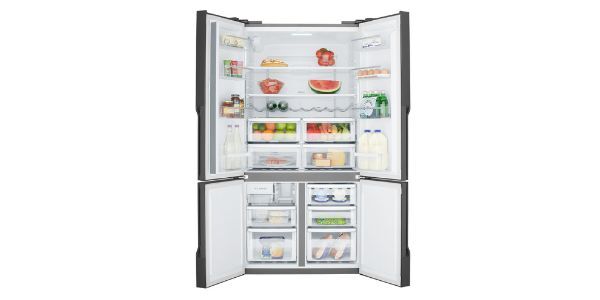
A well-organised fridge can help you waste less food, save money and enjoy fresher, healthier meals.
But keeping food fresh isn’t just about tossing things in and hoping for the best. From fruit and veggies to dairy, meat and leftovers, these practical tips can extend the shelf life of your groceries and make better use of your fridge space.
1. Use your crisper drawer wisely
The crisper drawer is designed to help keep fruits and veggies fresher for longer by controlling humidity. Most crisper drawers have an adjustable vent:
Set to high humidity (closed vent) for most veggies, particularly leafy greens.
Set to low humidity (open vent) for fruits that release ethylene gas, which which speeds up the ripening process.
Find out which fruit and veggies to store in which crisper drawer.

2. Store meat, poultry and fish on the bottom shelf
Raw meat, poultry and fish should be stored on the bottom shelf, where it’s coldest. Always keep them in sealed containers to prevent leaks and cross-contamination. If you don’t plan to use them within a couple of days, it’s a good idea to freeze them.
3. Keep dairy at a stable temperature
Milk, yoghurt and cheese are best stored on the middle shelves, where the temperature is most stable. If possible, avoid storing milk in the fridge door, as the frequent opening and closing can cause temperature fluctuations and potentially reduce its shelf life. Wrap soft cheeses in wax paper and use wither plastic wrap or ventilated storage container, like a cheese box, that allows some airflow and prevents excess moisture buildup.

4. Organise leftovers and ready-to-eat items
Store leftovers and ready-to-eat items like dips and cooked meals in clear, sealed containers on the top shelf. This keeps them easily visible and helps you remember to use them before they go off. It’s just too sad to discover a once-mouthwatering portion of lasagne that’s been languishing at the back of the bottom shelf for weeks on end.
5. Avoid overcrowding the fridge
Overfilling the fridge can prevent good air circulation, leading to uneven cooling and quicker food spoilage. Cold air needs space to circulate, so avoid cramming items too tightly, especially in the crisper drawer.
If your fridge feels packed, consider reorganising shelves or removing bulky packaging to free up space. Regularly checking for, and chucking out, expired items will also help.
6. Wrap certain veggies to prevent moisture buildup
Leafy greens: Wrap in a damp kitchen towel and store in a sealed container to retain moisture.
Cucumbers, radishes, and carrots: Wrap in a dry paper towel to absorb excess moisture and prevent sliminess.
Spring onions/shallots and fresh herbs: If you have the space, keep in a jar with a small amount of cold water, like a bouquet, to keep them fresh and crisp.
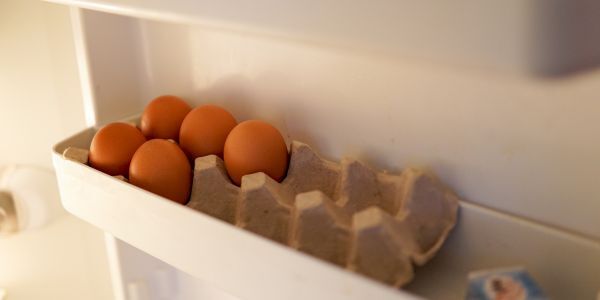
Keep eggs in their carton in the fridge
7. Store eggs and butter properly
Eggs are best kept in their original carton on a middle shelf, where the temperature is stable.
Butter can be stored in the fridge door, as it’s less sensitive to temperature changes and stays spreadable. If the room temperature is below 21°C, you may prefer to keep butter unrefrigerated in a butter dish.
8. Use the fridge door for condiments
The fridge door is the warmest part of the fridge, so it’s best suited for condiments, jams, and other items that aren’t highly perishable. Ketchup yes, kombucha no.
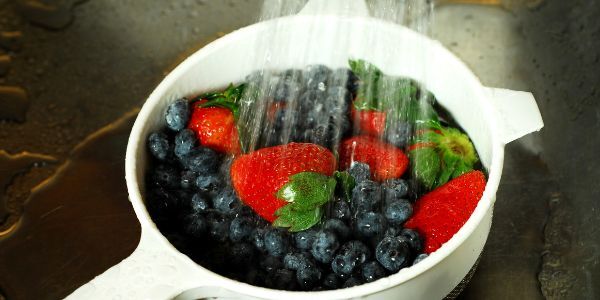
Wash but DON'T re-fridge them!
9. Don’t wash produce before storing
Washing fruits and veggies and then putting them in the fridge is a bad idea as there will generally be some residual moisture, which accelerates spoilage. Instead, store them unwashed and rinse just before prepping or eating them.
10. Revive wilting veggies with cold water
If your leafy greens, celery, or radishes have started to wilt, give them a soak in cold water for 10–15 minutes to perk them up. You can also add ice cubes to the water for an extra-refreshing boost. This simple hack can help restore crispness and reduce food waste.
Keep it cool, fresh and organised with spacious French door fridges
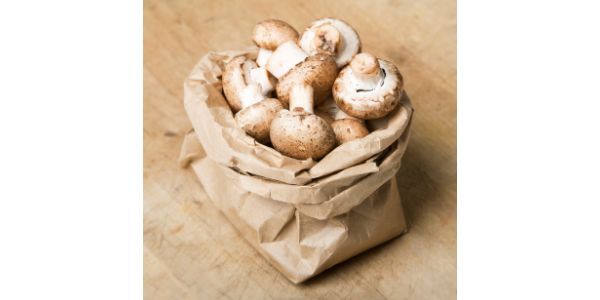
11. Use paper bags for mushrooms
Plastic bags can trap moisture, making mushrooms slimy. Instead, store them in a brown paper bag to allow airflow while preventing moisture buildup. This helps maintain their texture and extends their shelf life, keeping them fresher for longer.
12. Keep your fridge clean and organised
Proper food storage also helps with maintaining food safety. Regularly clean your fridge to prevent bacteria from spreading, and rotate older items to the front so they get used first.
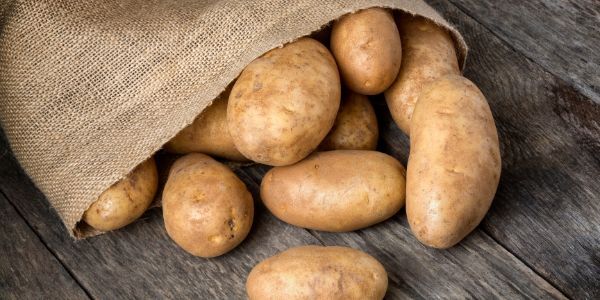
13. Store potatoes, sweet potatoes and pumpkins in a dry place
These veggies don’t belong in the fridge at all! Store them in a cool, dry, dark place out of direct sunlight to prevent them from sprouting or becoming mushy.
Reducing food waste for sustainability
By following these fridge storage tips, you can extend the shelf life of your fresh food, reduce food waste, and save money. Small changes, like adjusting crisper settings, separating fruits and veggies, and storing foods correctly, make a big difference in keeping your fresh produce and other foods fresher for longer.
Need a crisp new fridge? Get it ASAP with Free, Next Day Delivery*
If your old fridge struggles to keep veggies, meat and dairy fresh despite your best efforts, Appliances Online can quickly get a new one to you. We deliver our huge range to 95% of Australia’s population with Appliances Online's legendary FREE delivery - and we can usually get it to you by the next day (Mon-Fri). We even offer paid Same Day Delivery in NSW, QLD, and VIC metro areas if you order before 12pm on weekdays.
Plus, we’ll take your old fridge away for free and safe recycling. Check out our full range of fridges here, and if you need some tips, call our friendly team 24/7 on 1300 000 500, or message us via the chat icon at the bottom of your screen.

Oli is Appliances Online's editor and blogger, with almost two decades of lifestyle-related writing and editing to his name. With a mission to help you buy better and live smarter, his brand loyalty will forever belong to the appliance manufacturer that develops a self-emptying dishwasher.
Latest Articles
TV, AUDIO & ELECTRONICS
22 DECEMBER 2025
6 of Our Best 65 inch TVs in 2025
Check out our best selling 65 inch TVs
HEATING, COOLING & AIR TREATMENT
19 DECEMBER 2025
Which Sunbeam electric blanket should you get?
Quilted or fleece? Cosy feet zones or antibacterial finish?
BLOG HOME
19 DECEMBER 2025
Get it in time for Christmas! Last minute gifts, with free delivery
Order by 23 December - we’re delivering until Christmas Eve!
TV, AUDIO & ELECTRONICS
19 DECEMBER 2025
3 of the best value OLED TVs in Australia right now
Only OLED screens have true black for ultimate contrast.
More Like This
TV, AUDIO & ELECTRONICS
22 DECEMBER 2025
6 of Our Best 65 inch TVs in 2025
Check out our best selling 65 inch TVs
BLOG HOME
19 DECEMBER 2025
Get it in time for Christmas! Last minute gifts, with free delivery
Order by 23 December - we’re delivering until Christmas Eve!
TV, AUDIO & ELECTRONICS
19 DECEMBER 2025
3 of the best value OLED TVs in Australia right now
Only OLED screens have true black for ultimate contrast.


